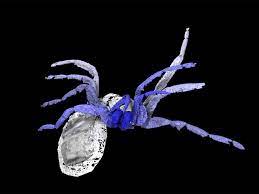In the intricate world of prehistoric creatures, a recent discovery has unveiled a fascinating chapter in the evolution of spiders. Paleobiologist George Poinar Junior, in a groundbreaking study published in the journal Historical Biology, sheds light on a remarkable find—a fossilized spider with a unique strategy of camouflage. Discovered in Colombia and preserved in copal resin, this ancient arachnid belongs to the species Myrmarachne colombiana, known for its astonishing mimicry of ants. This article delves into the significance of this discovery, exploring the evolutionary implications and the marvel of nature’s camouflage strategies.
The Marvel of Mimicry:
The art of mimicry in the animal kingdom has long fascinated scientists and enthusiasts alike. From butterflies resembling leaves to predators mimicking harmless species for protection, mimicry serves as a powerful survival tactic. Among spiders, the strategy of masquerading as ants is relatively rare but highly effective. Ants, with their aggressive defense mechanisms and chemical deterrents, are avoided by many predators. By adopting the appearance and behavior of ants, spiders gain protection from larger predators and increase their chances of survival—a phenomenon observed in the newly discovered Myrmarachne colombiana.
Unraveling Evolutionary Mysteries:
The discovery of Myrmarachne colombiana offers a glimpse into the evolutionary history of spiders and their intricate adaptations. While spiders are typically elusive in the fossil record due to their soft exoskeletons, rare preservation in substances like copal resin provides invaluable insights into their ancient counterparts. The absence of ant-mimicking spiders in Colombian records prior to this discovery underscores the significance of this finding, raising questions about the origins and spread of mimicry strategies among arachnids.
The Ingenious Ant Impersonator:
But how does a spider transform itself into an ant? The key lies in subtle adaptations in morphology and behavior. While lacking the anatomical features of ants, such as antennae and a segmented body, Myrmarachne colombiana employs visual deception and behavioral mimicry to resemble its ant counterparts. With its elongated abdomen and intricate coloration patterns, the spider adopts the appearance of an ant, while its movements and posture mimic the characteristic behavior of these social insects. The result is a convincing disguise that confounds would-be predators and allows the spider to thrive in its environment.
Implications for Modern Ecology:
Beyond its significance in paleontology, the discovery of Myrmarachne colombiana holds relevance for contemporary ecology and conservation. By understanding the evolutionary origins of mimicry and camouflage strategies, scientists gain valuable insights into the dynamics of predator-prey relationships and species interactions. Furthermore, insights from ancient mimicry adaptations can inform conservation efforts aimed at protecting vulnerable species today. The study of prehistoric creatures not only enriches our understanding of the natural world but also underscores the importance of preserving biodiversity for future generations.
The discovery of Myrmarachne colombiana represents a milestone in the study of ancient arachnids and their remarkable adaptations. Through the lens of paleobiology, scientists unravel the mysteries of mimicry and camouflage, revealing the ingenious strategies employed by spiders to survive and thrive in their environments. As we marvel at the magical transformation of this rare fossil spider, we are reminded of the boundless wonders of nature and the endless possibilities for discovery that await us in the depths of Earth’s history.
